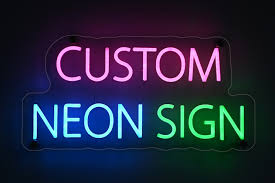In today’s competitive business landscape, call centers play a critical role in shaping customer experiences. An effective Quality Assurance (QA) framework is essential for ensuring that customer interactions meet high standards and contribute to overall business goals. Customizing your call center QA framework template is crucial to achieving the maximum impact. This article will guide you through the process of tailoring your QA framework to enhance its effectiveness.
Understanding Your Current QA Framework
Assessing Your Existing QA Framework
Before making any modifications, it’s essential to evaluate your current QA framework. Start by reviewing the existing metrics and criteria used to assess call quality. Look at how well these elements align with your business objectives and customer expectations. Identify any gaps or areas where the framework may be falling short. This assessment will serve as the foundation for your customization efforts.
Identifying Key Areas for Improvement
Once you’ve assessed your existing framework, pinpoint the key areas that need improvement. Common issues might include outdated evaluation criteria, lack of focus on specific call types, or inadequate training for QA evaluators. Understanding these weaknesses will help you focus your customization efforts where they will have the most significant impact.
Customizing Your QA Framework Template
Aligning the Template with Business Goals
- Defining Key Performance Indicators (KPIs)
To ensure that your QA framework supports your business goals, start by defining clear Key Performance Indicators (KPIs). KPIs should reflect both qualitative and quantitative aspects of call quality. Common KPIs include customer satisfaction scores, first call resolution rates, and average handle times. Tailor these KPIs to match your business objectives, whether that’s improving customer retention, increasing sales, or enhancing operational efficiency.
- Setting Up Evaluation Criteria
Once you’ve established your KPIs, set up specific evaluation criteria for assessing calls. This involves determining what aspects of a call will be evaluated and how they align with your KPIs. For example, if customer satisfaction is a key goal, include criteria that assess the agent’s ability to address customer needs effectively and provide a positive experience.
Tailoring the Template to Different Call Scenarios
- Handling Customer Complaints
One critical area of focus is how your QA framework addresses customer complaints. Customize your evaluation criteria to ensure that agents are assessed on their ability to handle complaints professionally and effectively. Include aspects such as empathy, problem-solving skills, and resolution speed. This will help ensure that your framework supports agents in managing challenging interactions and turning them into positive outcomes.
- Managing High-Volume Calls
High-volume call scenarios can strain even the best QA frameworks. Customize your template to include specific criteria for managing these situations. Focus on efficiency and effectiveness, assessing how well agents handle multiple calls without sacrificing quality. This might involve setting benchmarks for call handling time and evaluating the agent’s ability to stay composed under pressure.
Implementing the Customized QA Framework

Training Your Team
A customized QA framework is only as effective as the team implementing it. Provide comprehensive training to your QA evaluators and call center agents on the new criteria and procedures. Ensure that they understand the rationale behind the changes and how they contribute to achieving business goals. Training should also include practical exercises and role-playing scenarios to reinforce the new standards.
Integrating the Framework into Daily Operations
Integrating the customized framework into daily operations involves updating your call center’s standard operating procedures and ensuring that the new evaluation criteria are consistently applied. Regularly monitor adherence to the framework and provide feedback to your team. This will help maintain high standards and ensure that the framework effectively supports your call center’s objectives.
Monitoring and Adjusting the Framework
Analyzing Performance Data
After implementing the customized QA framework, continuously monitor performance data to assess its effectiveness. Analyze trends in call quality metrics and KPIs to determine if the framework is achieving the desired outcomes. Look for patterns or areas where the framework may need further refinement.
Making Continuous Improvements
Based on your performance analysis, make necessary adjustments to the QA framework. This might involve updating evaluation criteria, refining KPIs, or providing additional training to address emerging issues. Continuous improvement is key to maintaining the relevance and effectiveness of your QA framework.
Conclusion
Customizing your call center QA framework template is essential for maximizing its impact on call quality and overall business performance. By assessing your current framework, aligning it with business goals, tailoring it to different call scenarios, and continuously monitoring and adjusting it, you can ensure that your call center operates at its highest potential. Implement these strategies to enhance your call center’s effectiveness and deliver exceptional customer experiences.






